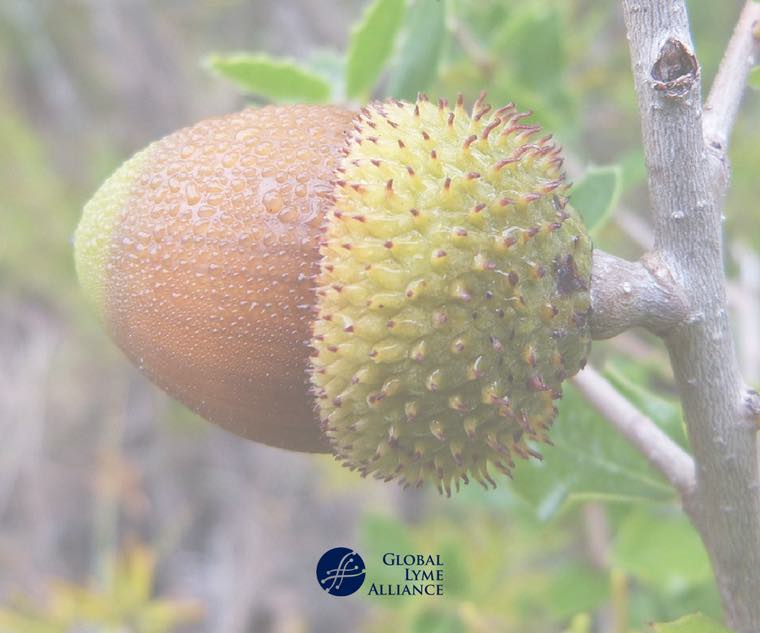
A look at the connection between acorns and Lyme disease, highlighting the work of GLA Scientific Advisory Board member Rick Ostfeld
You might have heard that the Lyme apocalypse is upon us this year. In spring, media outlets from NPR to USA Today to the New Scientist were forecasting a black-legged tick population eruption with a consequent outbreak of Lyme disease in the American Northeast. Transmitted by tick bite, Lyme can cause symptoms such as fatigue, fever, headache, and a characteristic bull’s-eye skin rash called erythema migrans. If untreated, the disease can spread to joints, the heart, and even lead to neurological complications such as Bell palsy. Today, Lyme is North America’s leading “vector-borne” disease—a term used to describe any disease transmitted from animal to human via live host. Despite decades of research and control efforts, new cases of Lyme in humans continue to climb. Confirmed cases reached a total of 28,500 in the U.S. in 2015 (plus an additional 9,600 probable cases). That’s more than double the number found when they were first recorded in 1995, according to the Centers for Disease Control and Prevention, though the trajectory has not been straight up, and increases may be partially related to heightened awareness. The number of counties in the U.S. that are considered Lyme disease hot spots has also more than tripled in that time, though the overwhelming majority of these is concentrated in just 14 states. The problem is not confined to North America. Europe is witnessing a rise in confirmed cases of Lyme, and the disease is extending its geographic reach in both Europe and the temperate, forested parts of Asia. Some scientists believe now that the disease originated in Europe rather than in the northeastern U.S.—based on genetic sequencing of Borrelia burgdorferi—the Lyme-causing bacteria. The only known organism that doesn’t use iron to make proteins and enzymes, B. burgdorferi is particularly difficult for human bodies to kill because our immune system often tackles pathogens by starving them of iron. B. burgdorferi also lacks many other features common to bacterial pathogens, such as toxins and specialized secretion systems, which human immune systems use to detect and fight foreign invaders. The black-legged tick is the only organism that can transmit B. burgdorferi between animals or between animals and humans. Ticks must have a blood meal at each of their three life stages to survive, so they climb onto their hosts from leaf litter or the tips of grasses or shrubs, attach their mouthparts to the host, and suck its blood slowly for several days. If the host animal has Lyme bacteria in the blood, the tick can ingest the pathogen and become infected, transmitting it to a new host at its next feeding, when the pathogen will rise from its gut to its feeding tubes. Once infected, the ticks stay infected for life. Read the entire article on JSTOR .






